Suppose the visitor wants to live winter in Minorca, get to the island for the first time… but out of season.
A good start would be to go eat Rias Baixas, in the town of Ferreries which, despite what its name indicates since the first owner was a Galician, is now run by a Menorcan who probably still has the best seafood on the island, but what do you season with traditional Menorcan dishes such as Menorcan mussel grill, squid stuffed with pasta almond or aubergine with prawns and sprinkle with the signature island beer, the Graham Pearce of Sant Climent wheat, considered the best Balearic craft beer.
Before night falls you have to see sunset over the port of Ciudadela , when the palaces turn ocher due to the sunset light that gradually darkens the masts of the ships until they disappear.
It is time to take the only main road that cuts the island in two and west of Ciudadela drive towards the east end and arrive in less than an hour at the center of Mahón. The revolving wooden door Hotel Port Mahon was born with the hotel in the mid-twentieth century and gives way to its lounges, the suites, each with its own terrace that overlooks one of the largest and most strategic ports in the world.
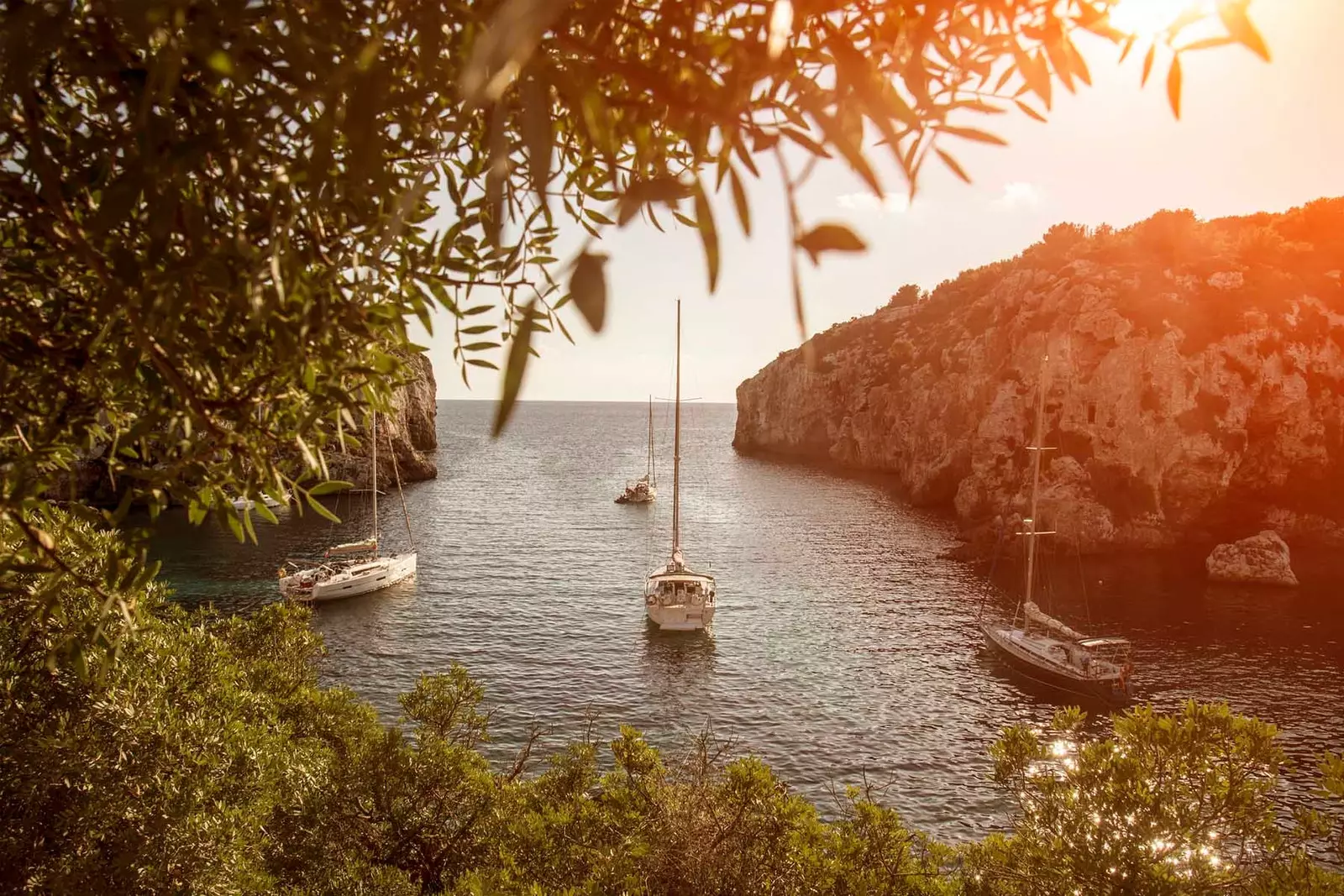
Can you imagine yourself here...?
In the cool of the night you sense that calm of winter where after the hustle and bustle of summer and autumn you receive a suitable season for serenely enjoy the exalted nature of the island, its cafes, restaurants and a cultural life very much its own.
We sat down at the hotel's vintage bar to try the quintessential Menorcan drink the ointment or lemonade with gin Xoriguer, whose factory is in the port, and chat with an unexpected Menorcan friend about the comings and goings of the island winter.
Everyone knows each other there is time for gatherings, reading, arranging tools, or simply strolling through streets that welcome almost the exact number of people for which they are made.
There is more to see when, strolling through Mahón at night, in the Cloister Market in the Constitution Square, people move between the arches and stalls without elbowing each other, they buy their sobrasada or the colorful vegetables and before returning home they eat in the same square a cocktail on the balcony new bar, neighbor of the Church of Santa María and the Town Hall, from where the transit of passersby is gossiped, almost all of them known, except for a few lost and eager tourists to discover the charms of Menorca in winter.
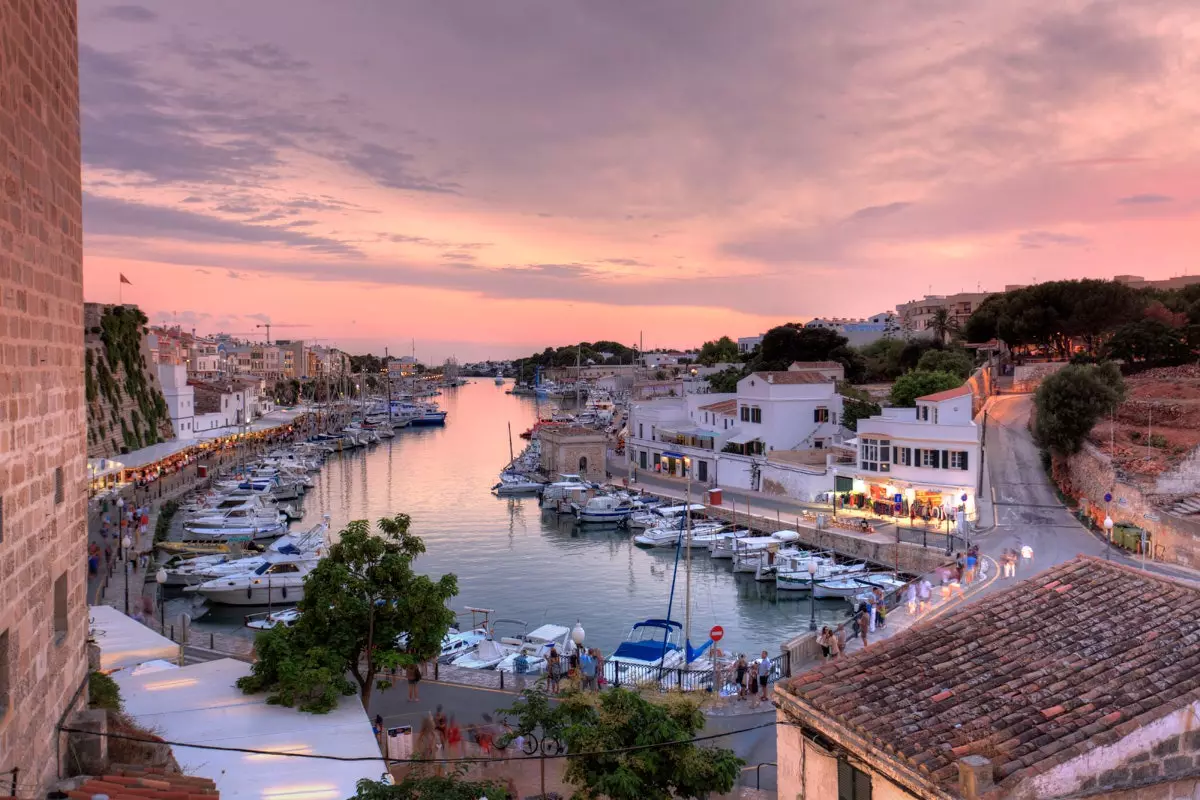
Citadel at sunset.
THE STONE IS THE STAR OF MENORCA
Pere Massó waits the next morning in his jeep for Jeep Safari Menorca to visit the tax projects Sustainable tourism.
His passion for Menorca is contagious and he completes it with a great knowledge of the terrain and history: “The island is literally divided into two parts. The north, the oldest, is made of red earth, while the south is dressed in limestone, which is why, although the island is full of archaeological remains, these predominate in the south due to the ease of molding calcareous stone”.
Talk about the great English influence after its colonization of the island , disputed also by French and Spanish. Influence that is observed at every step, even in the sash windows and doorknobs, very English them.
We got out of the jeep to greet Alex Cortada and Bep Guardia, in charge of the management and recovery plan Cami de Cavalls.
A colossal and sustainable project focused on the 287 km road. that surround the island and that it was built for defensive reasons today is perfect to do it in winter, without the summer heat, on foot, by bicycle, on horseback or in an all-terrain vehicle. And better with Pere's group that combines nature, culture, archeology and geology during the journey.
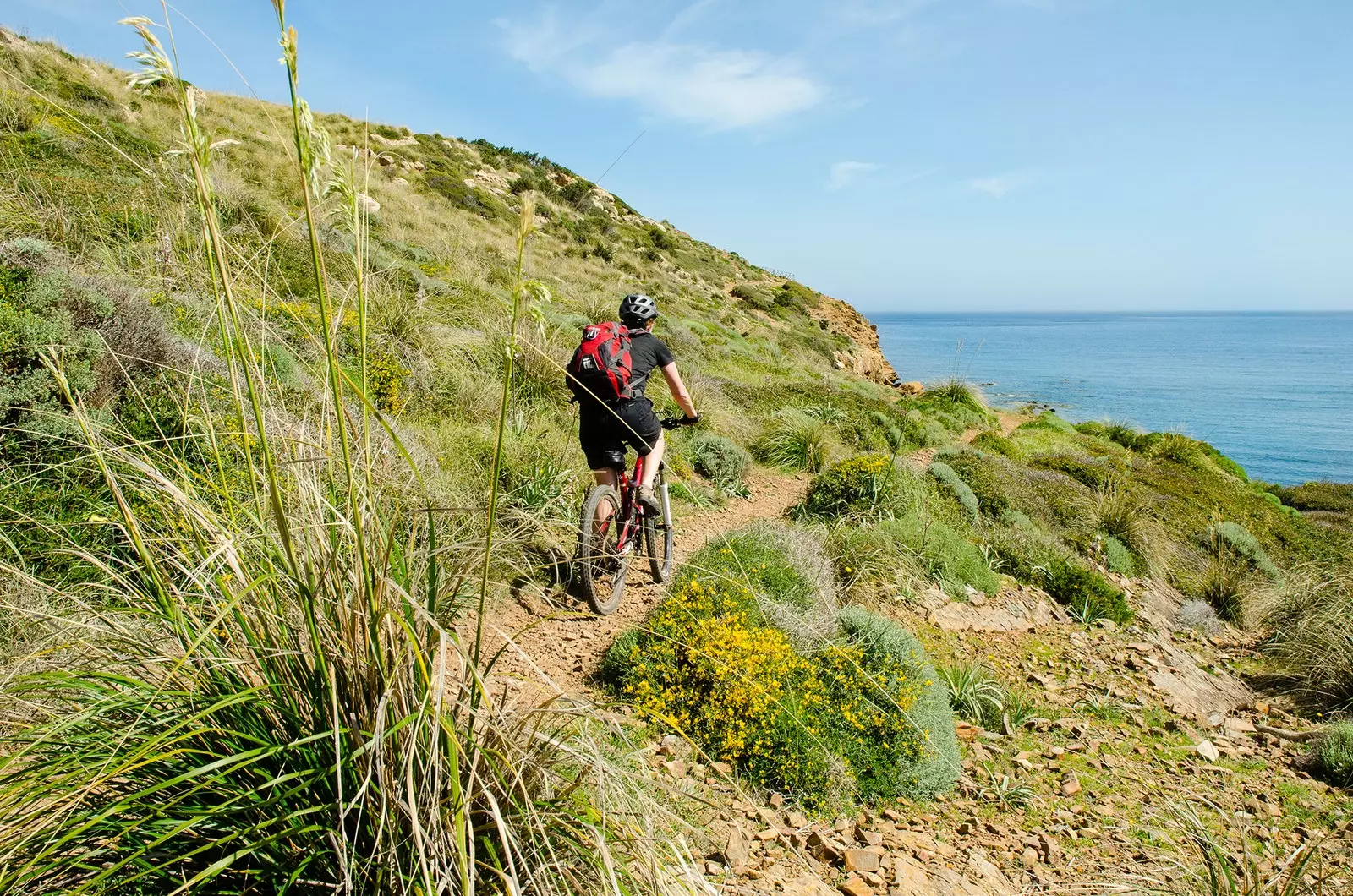
The Camí de Cavalls, also by bike.
As you set off towards Pillar Cove appears one of the many wooden fences of acebuche (wild olive tree), the barriers, that dotted between the dry walls (World Heritage Site), separate plots. This form of division began with the English period and has continued in its quest to differentiate land and unite cattle.
The stony walls, the raging blue of the sea and the pines bent by the wind make the landscape a dramatic and beautiful painting, humanized by Carlos Bagur Salord, the waller who, with just a penny, every day paves the dry wall that has buried the sand, and whom he can be seen photographed together with other artisans in Handicrafts from Minorca.
There is no better place on the island to enjoy a picnic than Monte Toro, the highest mountain in Menorca with a height of 318 meters perhaps in other mountainous parts it would be worth the denomination of hill.
But Monte Toro stands proud next to the sanctuary whose virgin bears his name and on the town of Mercadal, which is located in the center of the island. From its top you can see the whole of Menorca, panoramic view that on a clear day reaches Mallorca. Its coves, the dry walls that parcel out the island can be seen from a bird's eye view and that unique greenery of winter that in summer takes on the color of wheat.
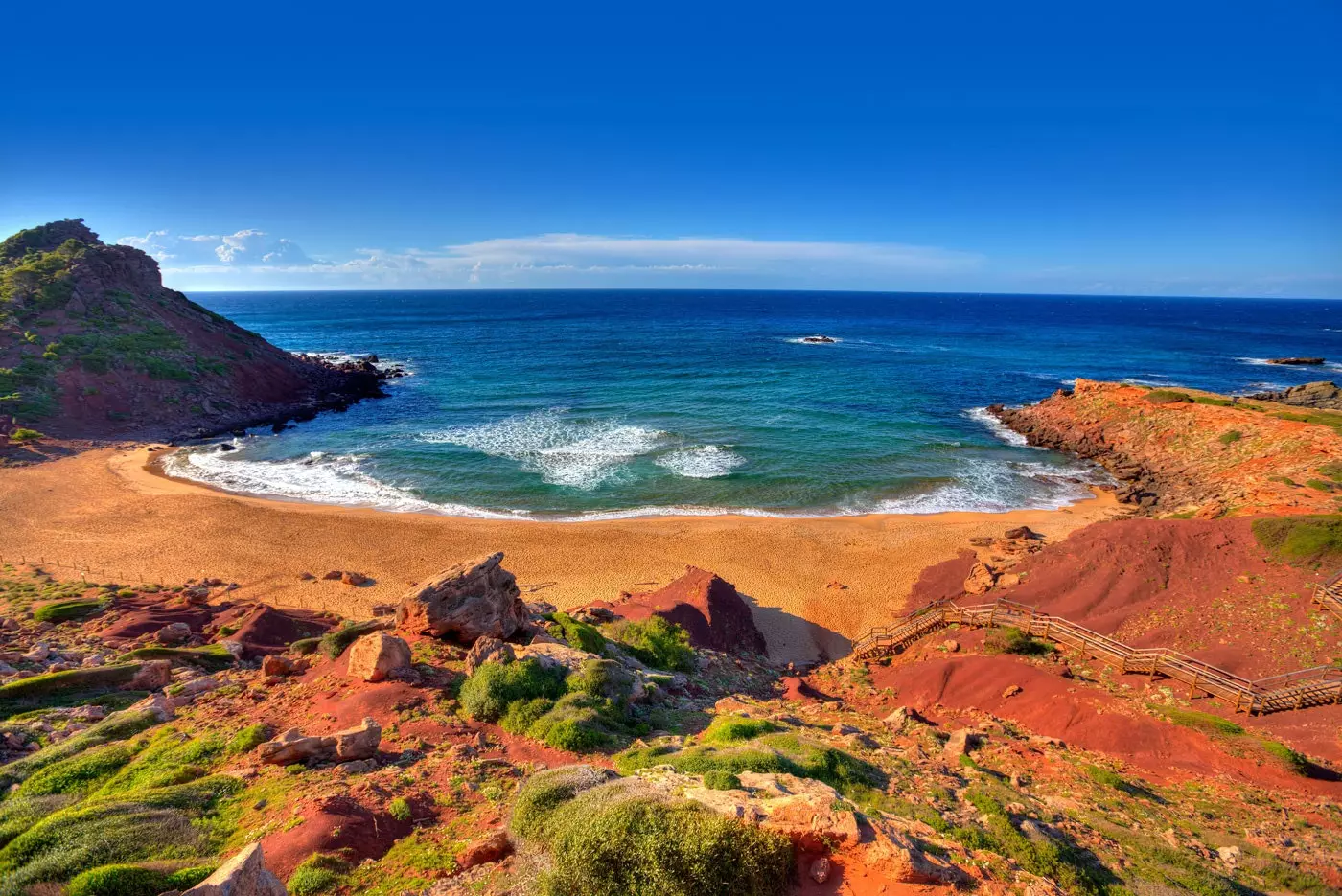
Cala Pilar, Menorca.
TALAYOTIC VILLAGES
They honor those rocks that are constantly mentioned in Menorca, as if they were their reason for being. And actually they are, since the first settlers of the iron and bronze ages built their talayots or watchtowers stone upon stone, around which towns such as Talatí de Dalt were located, which we arrived with Pere who told us along the way how the Talayotic culture is proposed for this 2022 as a UNESCO Heritage Site.
Entering the village it is almost dark. The red sunset sky gives Talatí D´Alt an even more bewitching aspect than this series of limestone dwellings have, among which the table, spiritual table. Closing your eyes in the silence of the night you can feel the life that shaped Menorca today.
Impressive are the Quarries of s'Hostal where the limestone from which the buildings of Menorca are made was extracted. With the passage of time and the various regulations, its seven quarries have been converted into a large enclosure with labyrinths, sculpted spaces, gardens and areas to celebrate, in the most unusual and dramatic of settings, concerts, plays or other types of events.
The quarries have deserved the recognition of Hispania Nostra for its magnificent heritage rehabilitation and intervention of the landscape, as well as being declared an Asset of Ethnological Interest, forming part of the historical heritage of Menorca.
A SMALL ISLAND, A RICH HISTORY
The Museum of Minorca It conserves and exhibits in a delicious way the cultural heritage of Menorca from prehistory to the present day.
While, the Can Oliver palace is one of the most outstanding houses of the bourgeoisie of Mahón dedicated to the British legacy where you can enjoy interesting temporary collections, the furniture of that time and even an avant-garde space with curious pieces like a set of erotic legos.
And speaking of museums, in the inland town of Alaior a very noteworthy project is being managed, such as restoration of heritage Convent of San Diego at the Menorcan Gastronomy Center. A building reminiscent of the corralas in Madrid, where people lived around the patio, in this case The Courtyard of the Moon.
After waterproofing a giant cistern and restoration of wall paintings It will be an example of rehabilitation with resources from the Sustainable Tourism Tax, as the Councilor for Culture of the City Council, Jaume Reurer, tells us in detail and wisdom. LÔAC is also in Alaior and translates into the most important private collection on the island, which shuffles names of the category of Joan Miró, Miquel Barceló, Jaume Plensa, Tàpies, Palazuelo or Pijuan, whose works are exhibited among 140 others, through which the museum aims to transmit the importance of art to future generations in an educational way.
EAT MENORCA
The gastronomic side of the island could well begin with the Visit to the dairy farms from which the Mahón cheese is obtained.
In Son Mercer de Baix receives us the madonna, a curious and recurring figure in Menorca that alludes to the woman in charge of the farm, not to the owner with whom she has an agreement of production and profits, beneficial for both parties.
The Madonna introduces us to Friesian cows and the warehouses where the Mahón cheese rests, always square, since that quadrature is worth the denomination of origin. The next country stop leads to a farm of Bibillubet within the Farmers Experience project of small producers.
Llucía Pons, in charge of the program, conveys to us her eagerness to make known the seductiveness of the Menorcan countryside, ranging from the Mahón cheese, the saffron that is among the top five in the world, the Menorcan cow with excellent meat, the various experiences offered on the farms, to the black and proud Menorcan horse, the island's denomination of origin, which waits for Saint John's Day to gallop through the streets of Ciudadela mounted by a rider as eager as he is to enjoy that June day, when the city pays homage to that unique figure formed by rider and horse.
The Mahón Fish Market is a hit. Cozy and caring, In its stalls you can buy sea bream, grouper, scorpion fish, octopus, or the Menorca mussel and go to the stalls in front, where they will cook them in the oven while you choose a wine that pairs with the seafood banquet.
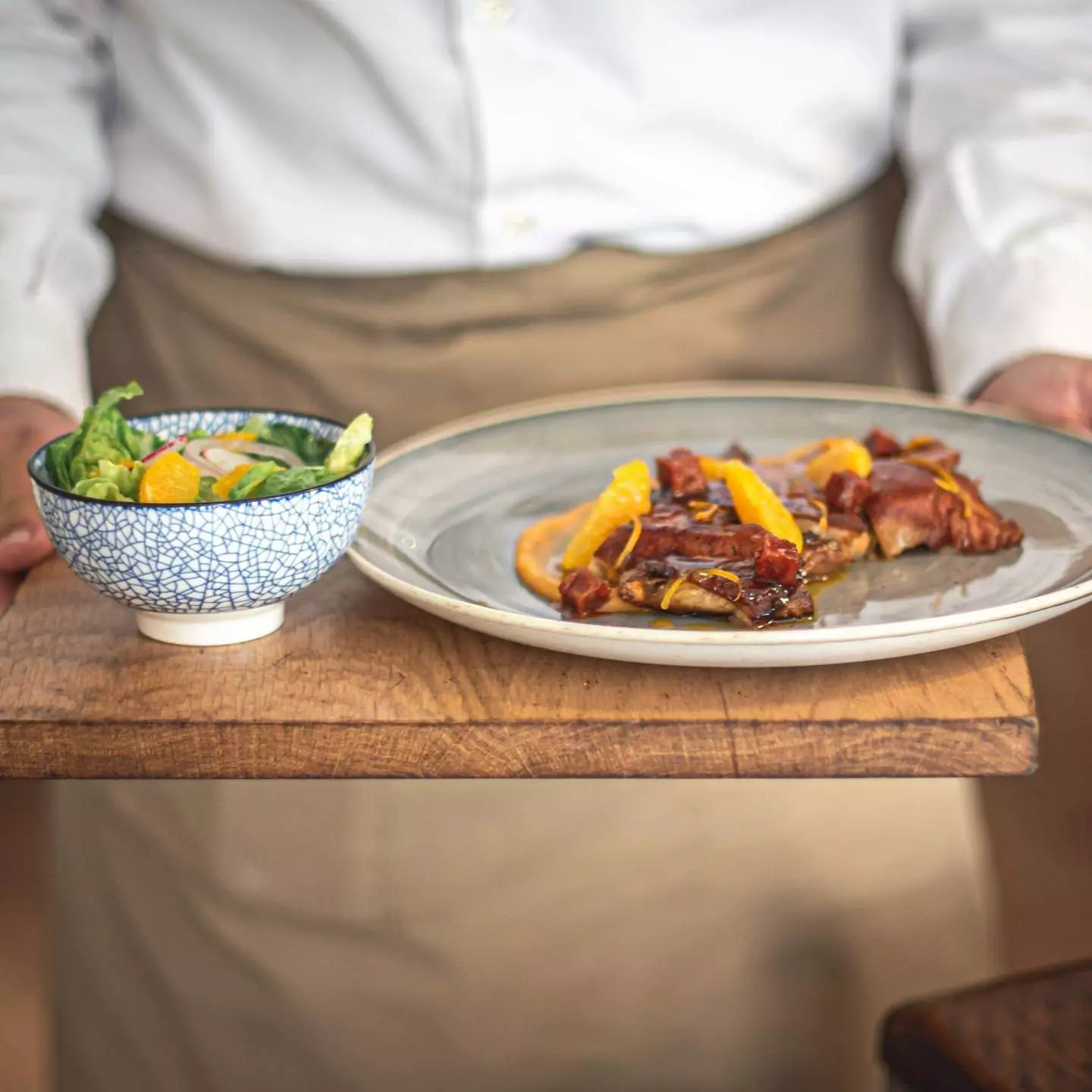
Mon Restaurant & Fonda.
Ciudadela is not far behind when it comes to good food. After walking it enjoying its magnificent architecture, we enter with Antonio Juaneda, creator together with Assumpció Bosch of the tasty initiative Eat Menorca, to the Salort palace where it is inevitable to recall the scenes of the Sicilian Gatopardo in a setting that constantly reminds him, both in its beauty and in its romantic decadence.
Salort is the setting chosen to represent a gastronomic scene about the book kitchen art by Fra Roger, Minorcan cuisine from the 19th century. eighteenth, sitting at the table and savoring some of their dishes with the company of gluttonous ghosts.
of the s. XVIII to the XXI in a matter of a few steps and from the land and the sea to the table, in Mon, one of the best restaurants in Menorca where its chef, Felip Llufriu, Joan Roca's right-hand man at Roca Moo, bets on Menorcan produce and flavour. Felip adds his own culinary art to snacks such as coca de brossat, lamb shoulder confit or the incredible skate with spring garlic sauce, inside a cozy and careful atmosphere and with a selection of wines that leans towards organic and local.
AN EXTRAORDINARY CAVE
The dream brought to a dreamlike reality by Nicolás Cabrisa, grandfather of Antonio Juaneda, who, as a good Menorcan, loved to wander among caves and island rocks. One fine day he left everything, he bought the cave Kayna, namesake of his artistic name, in Cala Santandría, just 3 km. of Citadel, and began to sculpt it, transforming the cave into his home and his great work.
Expressive and disturbing eyes, mythological, geometric figures, vivid colors fill every corner of Kayna that overlooks the turquoise sea of the cove. A singular corner that entails a pedagogical moral.
